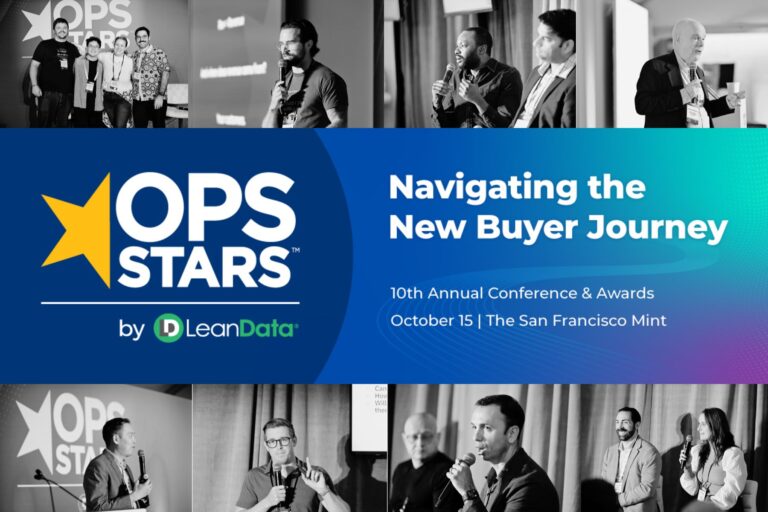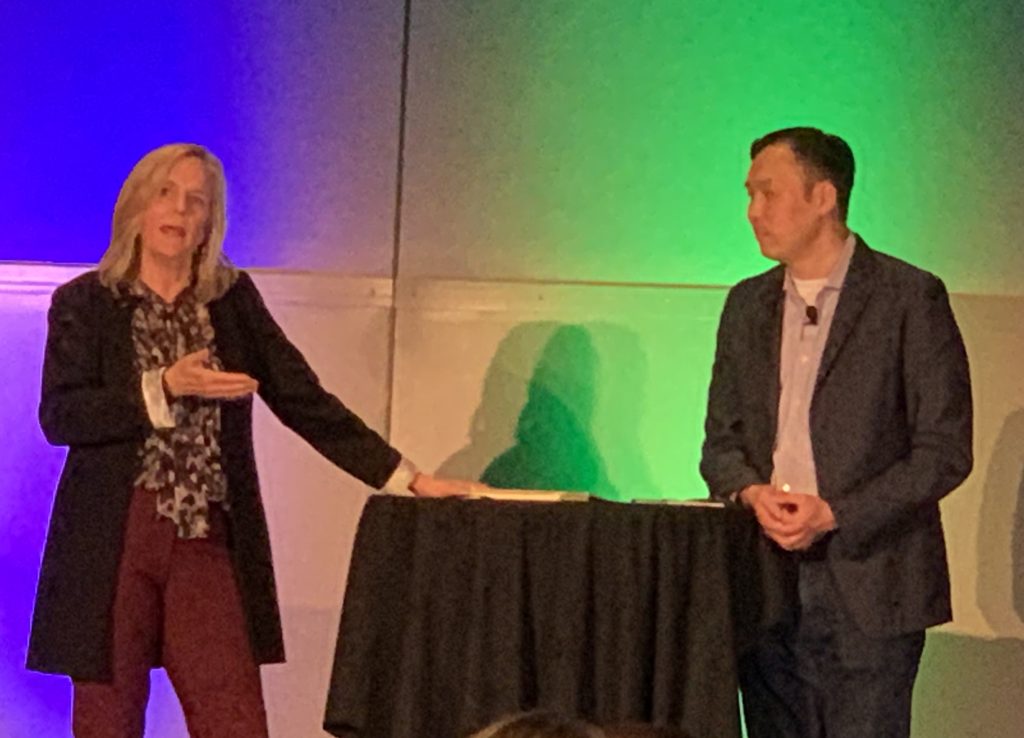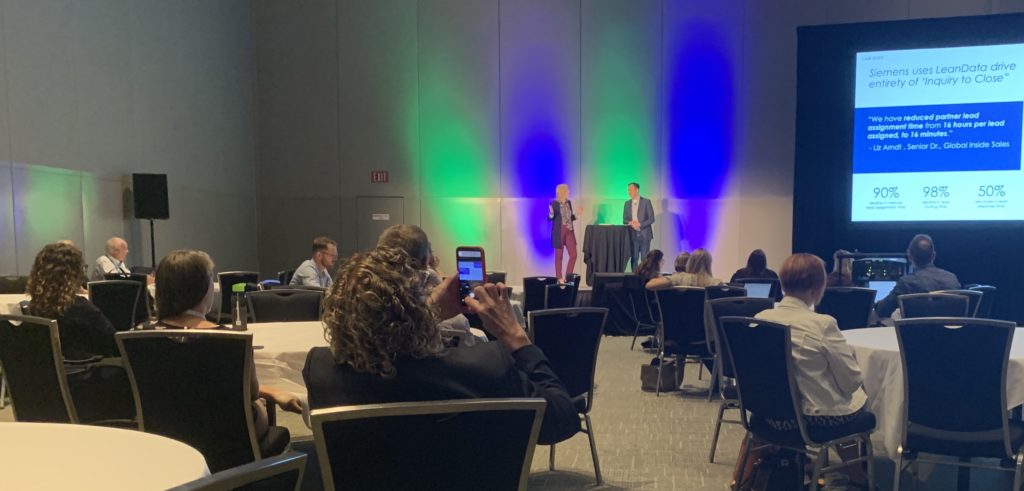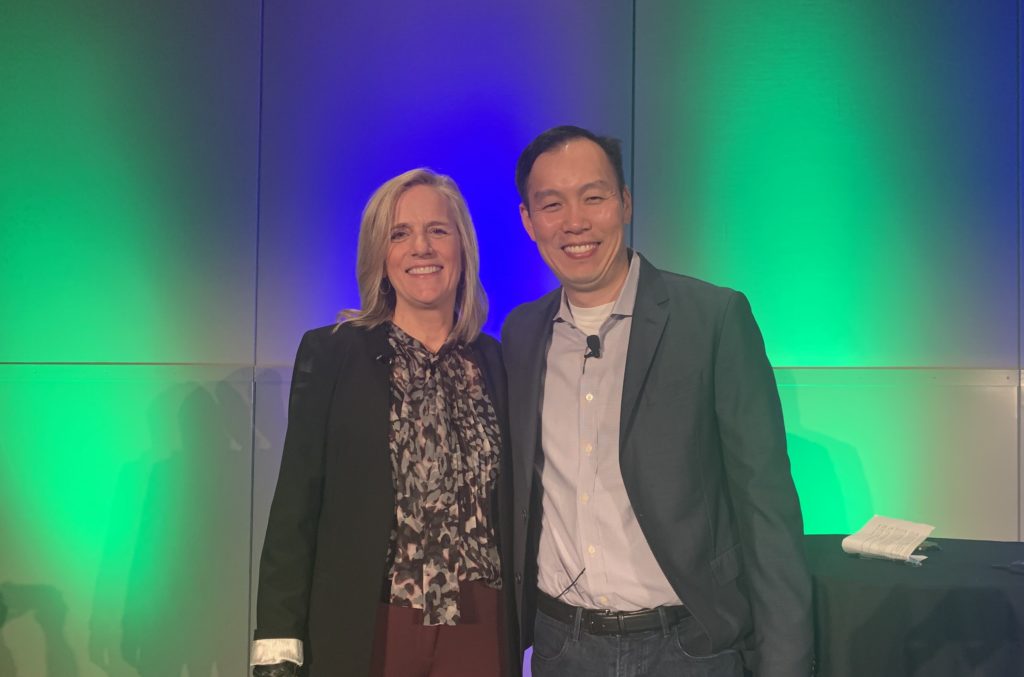Forrester bills its B2B Summit North America as “the premier event for B2B marketing, sales and product leaders to empower their strategies, fuel the revenue engine and drive the business forward.” As a platinum-level sponsor, the LeanData team and I could hardly wait for this year’s event, held May 2-4 at Austin Convention Center in Austin, Texas.
The three days most definitely didn’t disappoint.
On the Summit’s opening day, LeanData co-founder & CEO Evan Liang sat down with Liz Arndt; Senior Director, Global Inside Sales, Siemens Digital Industries Software, for the case study session, “Your Cheat Sheet for Demand Unit Transformation.”
What is the B2B Revenue Waterfall?
In 2006, SiriusDecisions introduced a growth model called the SiriusDecisions Demand Waterfall, a model designed to accommodate the increasingly complex go-to-market (GTM) motions of many large enterprises. After its acquisition by Forrester, the model is now branded the B2B Revenue Waterfall, and it focuses on buying groups — called demand units — rather than traditional leads.
In addition to focusing the demand process on demand units, the model also recognizes multiple selling opportunities per account and considers the sometimes volatile mix of prospect and customer opportunities that make up revenue goals at so many B2B companies. As such, the B2B Revenue Waterfall better aligns the entire revenue team to identify, engage, qualify and, most importantly, win opportunities.
Recently, Liz and her team at Siemens transformed their revenue orchestration strategy, transitioning from an account-based model to a B2B Revenue Waterfall model, a process she described as “difficult, but worth the pain.”
In describing the impetus for the change, Liz remarked that it was a “Goldilocks moment” of clarity. Leads were too small, accounts were too big, but an opportunity-centered model was “just right.”
Her anecdotal story about lessons learned shared during the case study showed that Siemens’ demand unit transformation was granular in nature, and not really a leap at all. Below, find her hints to create your very own cheat sheet for demand unit transformation.
Identifying the Need to Transition to a B2B Revenue Waterfall
Liz described Siemens as the “most complex company on the planet — over 300,000 employees, over $60 billion in annual revenue, a market cap of nearly $100 billion, and multiple lines of business, digital industries, smart infrastructure, mobility, healthcare, financial services, business services, real estate and a host of portfolio companies.
For her part, Liz resides in Siemens’ Digital organization, which has over 70,000 global employees and annual revenues north of $17 billion. With scale the size of Siemens comes a corresponding degree of complexity. In the past, trying to shoehorn all that complexity into tried-and-true growth best practices proved challenging.
One example Liz shared was with their Caterpillar account. Liz’s team had received a “hot” lead from the account, and that lead had their full attention and focus. At the same time, though, a team member from Marketing approached and informed Liz they had received many leads from the same Caterpillar division and asked if it was okay to de-dupe and delete the new leads.
Had Liz and her team gotten lucky this time around, with this lead and this account? How had their growth plays been negatively impacted in the past by well-meaning, but ultimately ill-advised lead-based and account-based actions?
Siemens, of course, isn’t unique in being caught in a bit of a revenue orchestration dilemma.
Many companies and their revenue teams live in between lead-centric and account-centric models, and, ultimately, struggle to scale growth. B2B Revenue Waterfall models are an alternative for organizations with highly complex products and/or highly complex go-to-market models, like Siemens.
The precise tipping point for transition from one model to another is still to be determined, but increased product complexity is the most typical trigger.
Learning from Siemens’ B2B Revenue Waterfall Transformation
Siemens’ initial goal and first step was to simply increase contact enrichment. Liz and her team didn’t try to boil the ocean. They took a very deliberate, incremental journey of both process and system updates. The cross-functional work team included members from Partners and Siemens’ inquiry-to-close revenue team.
Their desired end state was straightforward: Use automated, dynamic and direct-delivery workflows to send opportunities to partners.
Regarding the “build versus buy” dilemma faced by so many, Liz and her team invited several vendors, including both Forrester and LeanData, to a workshop. The outcome proved to be a combination of “rebuild and buy.” Siemens rebuilt its CRM and some of its marketing automation, and added a new vendor — LeanData — to have its modern revenue orchestration engine take root.
With new systems and processes in place, partner acceptance now converts Siemens’ opportunity records. Liz and her team are now at the end game and the first evidence of success is an opportunity acceptance rate that has shot up to 85 percent.
One unintended consequence of Siemens’ transformation initiative was that it highlighted the value of the Marketing team and its ability to consistently drive interest. Within the lead-centric model of the past, however, that interest had not been translated into partner and company value.
With its demand unit transformation well in place, Siemens’ revenue team benefits from full funnel visibility and a 360-view of the customer. Marketing and Sales are more closely aligned than ever, and are truly unified around a common goal: the demand unit and its opportunity.
Asked by the crowd at the B2B Summit, Liz offered up two key pieces of advice for those just starting on a demand unit transformation journey. First, start with the process initially, then examine the proper tooling later. Second, consider and evaluate compensation models right out of the gate; when peoples’ pay is threatened, they can be much less accepting of change.










